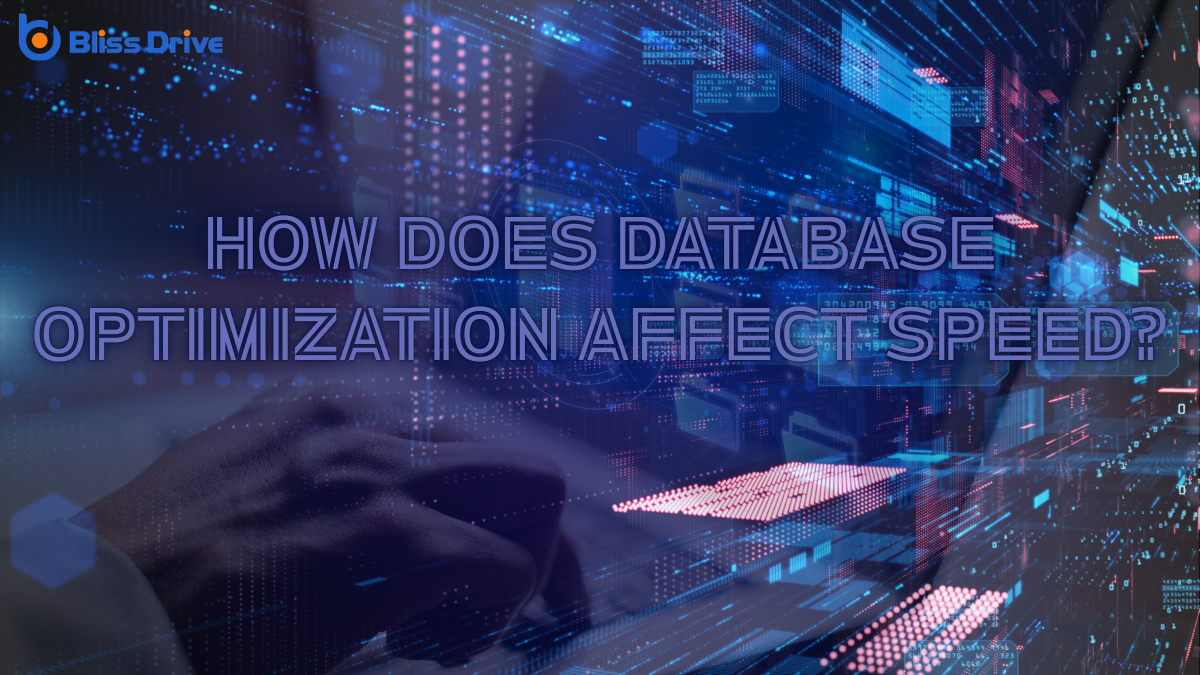Learn More About Us

When it comes to database optimization, you might wonder how it impacts speed. Imagine faster data access and improved performance just by tweaking a few settings. IndexingThe process of adding web pages into a search engine's database., query optimization, and proper design all play essential roles in this process. Yet, there's more to discover about minimizing bottlenecks and enhancing hardware choices. Curious about how these strategies come together to transform your database experience? Let's explore further.
Database bottlenecks can considerably hinder performance, turning even the most robust systems sluggish. You're dealing with delays when the flow of data through your database hits a snag.
Think of bottlenecks as traffic jams on a highway; they’re typically caused by limited resources or inefficient processes. Common culprits include excessive locking, insufficient memory, or slow disk I/O operations. If left unchecked, these issues can escalate, affecting response times and user satisfaction.
To tackle them, first pinpoint the source. Use monitoring tools to track performance metrics like query execution time.
Once identified, you can make informed adjustments. For instance, you might need to upgrade hardware or optimize queries. By addressing bottlenecks, you're effectively smoothing out the path data travels, ensuring quicker, more efficient database operations.

When it comes to optimizing databases, indexing plays an essential role in speeding up data retrieval processes. Think of an index like a book's table of contents. Instead of flipping through every page to find a chapter, you jump straight to it.
Similarly, in databases, indexing allows you to access data quickly without scanning every record. By creating indexes on columns frequently used in queries, you greatly reduce the time it takes to find data.
However, don't overdo it. Each index takes up space and can slow down data updates. Striking the right balance is key. You'll want to identify which columns benefit most from indexing and focus on those.
Mastering indexing can leadA potential customer referred by an affiliate who has shown interest in the product or service but h... to faster database performance and better user experiences.
To achieve optimum performance in database management, mastering query optimization techniques is essential. By refining your queries, you can greatly boost speed and efficiency.
Start by analyzing your queries to pinpoint areas for improvement. Consider the following techniques:
When you're designing a database, schema complexity can pose significant challenges that impact performance.
You'll find that effective indexing strategies are vital for speeding up data retrieval, while the choice between normalization and denormalization can affect both efficiency and data integrity.
Although database design can seem straightforward at first glance, the complexity of a schema can greatly influence performance. When you build a database, an intricate schema may lead to slower query responses and increased resource consumption.
You want to strike a balance between complexity and simplicity to optimize speed. Consider these challenges:
Indexing strategies play an essential role in database performance, acting as a roadmap to efficiently access data. When you implement the right indexing strategies, you can drastically reduce the time it takes for queries to retrieve information.
Think of an index like a book's table of contents—it helps you quickly locate the pages you need without flipping through everything. Without effective indexing, your database can become sluggish, making even simple queries take ages to execute.
Indexes improve search speed by organizing data in a way that makes it easy to find. However, not all indexes are created equal.
You'll need to tailor your strategy to your specific data and query patterns. Choosing the right index type and fields is vital for maintaining swift and efficient database operations.
Effective database indexing is like setting up a well-organized library, but the way you design the shelves—your database design—also plays a significant role in how quickly you can find what you need.
Normalization and denormalization are two approaches that impact performance. Normalization minimizes redundancy, ensuring data integrity and saving storage space. However, it can slow down read operations due to complex queries.
On the other hand, denormalization speeds up read operations, making data retrieval snappier, but at the cost of potential data redundancy and increased storage.
To choose the right approach, consider:

When designing a database, understanding the importance of data normalization can't be overstated. It’s a critical step that helps organize data efficiently. By breaking down large tables into smaller, related ones, you minimize redundancy and guarantee data integrity.
This process not only keeps your data clean but also enhances query performance, making your database faster and more reliable.
You’ll find that normalized databases are easier to maintain. With data stored in a structured way, updates and changes become less error-prone. Imagine how much simpler it is to update a single entry without worrying about inconsistencies elsewhere.
Normalization also reduces the risk of anomalies during data operations, guaranteeing your database remains accurate and consistent. By embracing normalization, you’re setting a strong foundation for peak database performance.
When you want to speed up your database, understanding the types of database caches is essential.
By implementing strategic caching, you can reduce the load on your database and enhance performance considerably.
Consider various cache implementation strategies, such as in-memory caches or distributed caches, to optimize your database system effectively.
Although database performance can often hinge on several factors, leveraging database caching is a proven strategy to enhance speed and efficiency.
Understanding the types of database caches can help you choose the right one for your needs. Here are some common types:
Having explored the various types of database caches, let's focus on how to effectively implement these caching strategies to boost your database's speed.
Start by identifying high-demand queries and data that users frequently access. Prioritize caching these to reduce load times.
Use an in-memory store like Redis or Memcached for quick access to cached data. Make certain your cache invalidation strategy is solid to prevent serving outdated information.
Regularly update your cache to keep data fresh and consistent. Balance cache size with your server's memory to avoid performance issues.
Monitor cache hit rates and adjust strategies as needed. By implementing these steps, you can greatly enhance your database's performance, providing faster responses and a smoother user experience.
To guarantee your database runs at peak efficiency, monitoring and analyzing its performance is essential. You need to regularly track key metrics to uncover bottlenecks and optimize system performance.
Here are some critical areas to focus on:

While monitoring and analyzing database performance helps identify areas of improvement, the hardware supporting your database plays a pivotal role in its overall efficiency.
Choosing the right hardware guarantees your database can handle the workload without lagging. Start by considering the CPU, which influences how quickly your database processes queries. Opt for a multi-core processor to manage multiple tasks simultaneously.
Next, look at RAM—more memory allows for smoother data retrieval and minimizes disk access times. Solid-state drives (SSDs) outperform traditional hard drives, offering faster data read/write speeds.
Network components also matter; invest in high-speed network interfaces to reduce latency. Selecting hardware that aligns with your database's needs can greatly enhance performance and guarantee seamless operations.
As you endeavor to keep your database running efficiently, focusing on continuous optimization practices is essential.
This proactive approach guarantees your system remains responsive and robust. Regularly optimize with these best practices:
By focusing on database optimization, you can greatly enhance speed and efficiency. Address bottlenecks with effective indexing and query optimization techniques. Use data normalization and caching to streamline operations. Regularly monitor and analyze performance to identify issues quickly. Choose the right hardware, like SSDs and increased RAM, to boost performance further. By implementing these best practices, you’ll guarantee a responsive and efficient user experience, keeping your database running smoothly and swiftly.
